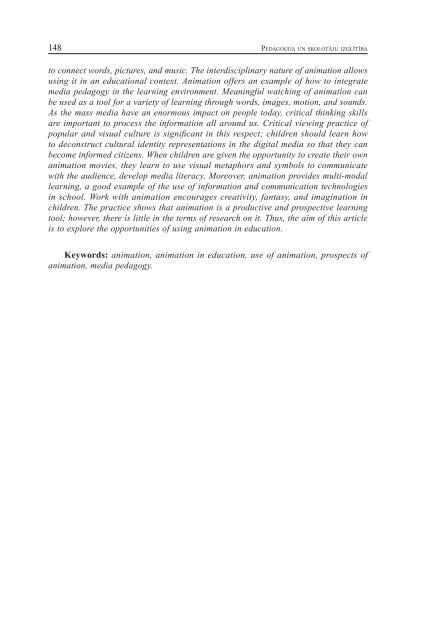You also want an ePaper? Increase the reach of your titles
YUMPU automatically turns print PDFs into web optimized ePapers that Google loves.
148 Pe d a g o ģ i j a un s k o l o t ā j u i z g l ī t ī b a<br />
to connect words, pictures, and music. The interdisciplinary nature of animation allows<br />
using it in an educational context. Animation offers an example of how to integrate<br />
media pedagogy in the learning environment. Meaningful watching of animation can<br />
be used as a tool for a variety of learning through words, images, motion, and sounds.<br />
As the mass media have an enormous impact on people today, critical thinking skills<br />
are important to process the information all around us. Critical viewing practice of<br />
popular and visual culture is significant in this respect; children should learn how<br />
to deconstruct cultural identity representations in the digital media so that they can<br />
become informed citizens. When children are given the opportunity to create their own<br />
animation movies, they learn to use visual metaphors and symbols to communicate<br />
with the audience, develop media literacy. Moreover, animation provides multi-modal<br />
learning, a good example of the use of information and communication technologies<br />
in school. Work with animation encourages creativity, fantasy, and imagination in<br />
children. The practice shows that animation is a productive and prospective learning<br />
tool; however, there is little in the terms of research on it. Thus, the aim of this article<br />
is to explore the opportunities of using animation in education.<br />
Keywords: animation, animation in education, use of animation, prospects of<br />
animation, media pedagogy.

















